|
Sheep are terrible. These rams, like any sheep, want to get the tastiest morsels in the hay. In order to do that, they feel they must stick their heads in to the bottom, where the fine leaves fall through and there are no stems to worry about. That, that sweet and bitter smorgasbord or no straws or stems to worry about is what they love. But, the hay contaminates their fleece. Feeding them on the ground is still the best stolution. It does prevent the wool around their necks from being damaged by sticking their heads through a feeder to the extent they nearly skin themselves, again, trying to find the best morsels which of course, in their minds are not at the top or easily accessed. The females are much worse than these four boys. Here Dominique, the Dorset, has a wreath around his neck. The hay has lots of mature alfalfa stems that are coarse and stay together. He put his head in and pulled it out decorated. These four rams are the breeding rams for the farm. Next year, in addition, there will be an Icelandic and a Finn cross. The Dorset is for sale, but he has a tail and it seems that people somehow think that sheep do not have tails. Farmers dock the tails of new born lambs with an elastic that is so tight it constrictst the blood to the tail and it falls off. When the elastic is applied, the lambs cry and cry and do everything they can think of to stop the terrible pain. I can only imagine. I don't do it anymore. Sheep have tails for a reason. If they are sheared and kept clean, there is no danger of maggots in the dung from the tail area, at least no more danger than a long wool sheep without a tail. Anyhow, here he is in his splendour, wearing his new fashion statement of a spring hay wreath. What fun!
0 Comments
I have had a hard time with the Nubian baby goats. They were wormed with Valbazen, which did not work and then with a triple dose of Ivermectin drench, which only worked marginally. The two wormers are of a different class, one being the 'white' wormers and the other being the 'mectin' class. Neither were effective. So I sent away for Molly's herbal wormer program. The program consists of two parts, a once in two month wormer with wormwood and a maintenance wormer for in-between, once a week. No, this is not an inexpensive alternative to chemical womers, which are very expensive too, but look at the photo. While the chemical wormers barely had any effect on the worms and the anemia resulting from a high worm load caused death, the herbal wormer caused an immediate expulsion of worms visible in the stool. The wormer does not work like a chemical wormer, killing the worms, but rather it causes the host to be inhospitable and the worms expel themselves. Then it is up to the chickens to find the worms in the stool and pick through and eat them up so the cycle does not perpetuate itself. Ideally, after worming the animals should be moved to clean ground, and a new pen entirely, but in my world, there are only so many pens and so many shelters and that is not a reality. The best I can offer is a good barn cleaning, which did happen, and since the temperatures are so mild right now, the barn is closed until needed. The goats do have a three sided shelter filled with clean bedding, so they are not left without a home.
Along with the herbal wormer, I included a lot of granulated garlic. This also helps to encourage the worms to get out of town. To make the powder palatable and edible, I mixed it with the granulated garlic and sugar beet pulp covered with molasses. The sweet pulp encourage the goats and sheep to eat up all the wormer and I even sprinkled a few oats in the mix, just to encourage the more reluctant ones. Ideallly, each individual animal should be fed a proper dosage and that works well with only a few animals, but there are 50 sheep and 20 goats, so it is not easily done. I am extremely pleased with the result of the herbal wormer. The treatment needs to happen for three days and then then the second formula happens once a week for the other 7 weeks. Diligence will be the key factor in eradicating the worms. Molly's herbal wormer is a patented formula, so the ingredients are not available. I think any number of worming herbs ground to a powder and mixed together will produce a similar result. For now, I ordered a ten month supply with the intent of getting rid of the worms in the sheep and goats. The other animals can use this program too, but getting dogs to eat it might not be so easy. I did give some to the chickens, however; they were not interested in it. It is there if they would like it though. I might add it to the oyster shell, which they consume in copious quantities to encourage them to eat it. Worm resistance is a growing problem for ruminants and their keepers. Years ago, there were no chemical wormers and the misuse of them, routinely worming twice a year wether the animals required it or not, and under dosing causes the worms to become resistant and then the chemicals no longer work. This is what happened with the Nubians. My own animals have been on a different herbal program which was working for this farm. The Nubians were stressed and the adult does were already anemic when they arrived, so I suspect the problem was brought to the farm. For every problem there is a solution. I strongly encourage farmers to investigate herbs for the eradication of worms. Resistance is not a problem then and the animals are not subjected to chemicals which stay in the meat and milk. It is a universal problem. Natural is the only way to make it disappear, but constant diligence is the key. I see it work firsthand and encourage all to give it a try. 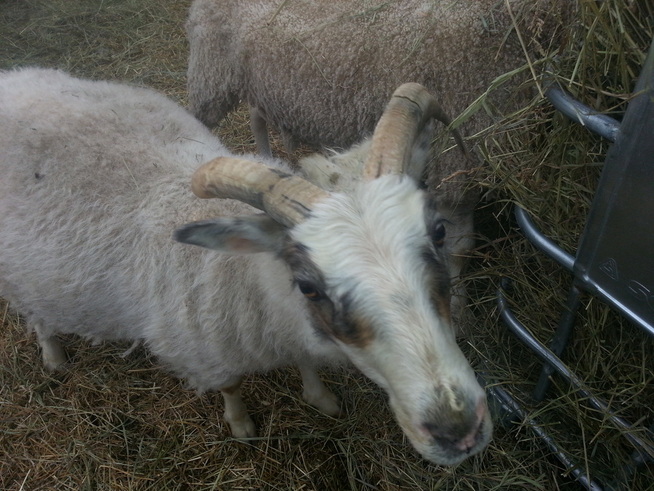 Leda is a pure bred Icelandic ewe with two Icelandic baby boys. She is out of my leader sheep, Crystal, who now lives at the neighbour's a ways down. Leda is a pure bred Icelandic ewe with two Icelandic baby boys. She is out of my leader sheep, Crystal, who now lives at the neighbour's a ways down. Now that I have made my mind up about the type of sheep I can keep, the others need to find homes. Selling random sheep is not easy. Most people just load them up and send them to the market, where they are purchased for meat. The prices are not very good either, depending on the day, and it does not matter if the sheep is rare or pure bred either. Who cares then? So, now I will take pictures and post them in various places where there might be an interest in sheep and keep my fingers crossed. These sheep are rare breeds, or at least not common except the Dorset and Suffolk. The trend has gone away from wool producing sheep because the price paid for wool is too low and does not even cover the cost of shearing the animals. Some of the sheep were born here on The Fat Ewe Farm. I watched them come into the world and some I even gave extra special care to ensure their survival. I have trimmed their hooves, given them medicines and loved them with all my heart, but they have to go. The Cotswold/Merino cross girls are big beautiful sheep with excellent wool for hand spinning and they are hard to part with, but they are not particularly friendly, nor were their mothers. My first sheep, the Karakuls, will be very difficult to let go. I have no idea how I am going to do it if I cannot find homes for the girls. Taking them to the market will break my heart. Really it will. 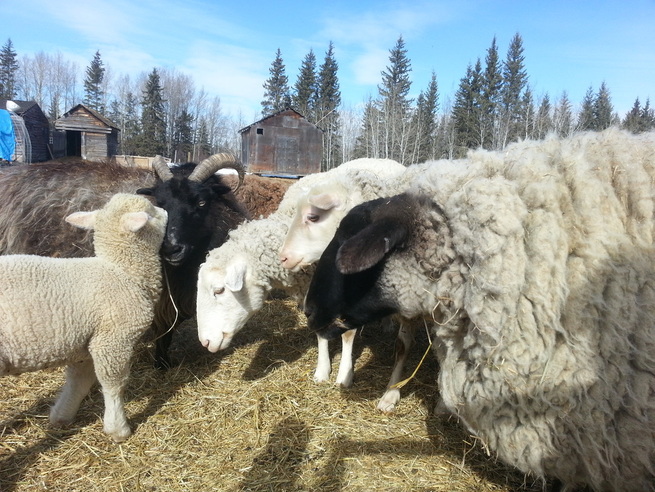 It is a big day tomorrow. The sheep, Angora goats, llamas and alpacas will all be sheared. This time I am trying the Hutterite colony. They are experienced with shearing and have won awards for their wool (not sure where, just that is what they told me), so I am willing to give them a go. I did have to call them because they did not show up the first time booked. Nat, the man in charge, said he lost my number. Anyhow, tomorrow is the big day. I spent a few hours preparing the barn, sweeping the floor, putting down two sheets of plywood, making a holding pen and a release pen with livestock panels and installing power via two long extension cords. I likely will have to come up with a second extension line, because I believe there are two shearers and two helpers. I won't have time to skirt the wool, only to fold and pack it and then tomorrow I can lay it out and take my time cleaning and skirting, which is removing the manure tags and very dirty wool. It is supposed to be just above zero, so it will be cold again. They do not think they will take a whole hour to shear 50 sheep, 3 llamas and 2 alpacas, plus the 6 Angora goats. The cost is $7 per animal, plus so much a kilometer to drive here, calculated at around $130 dollars. All in all, it is estimated to cost $450 or so dollars. I did not ask if they trimmed hooves, but I will when he calls tomorrow to say they are on their way. It is going to be a big day! 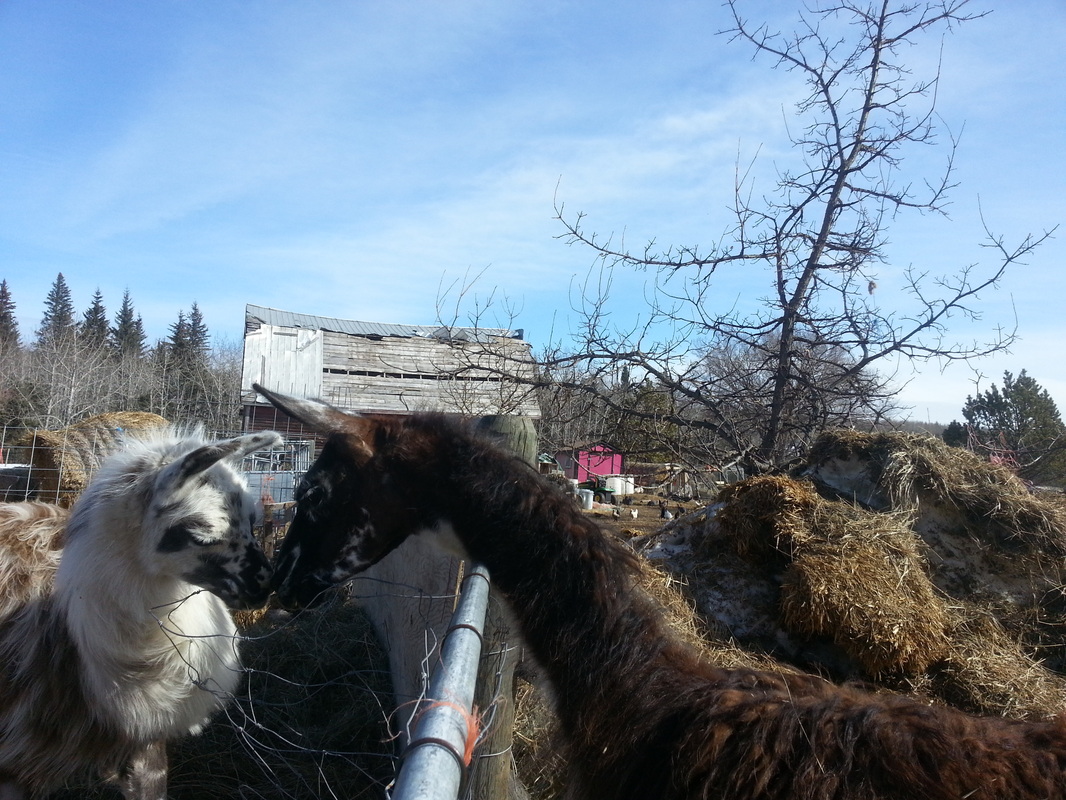 The theory is that if a lamb is picked up and shown to the mother sheep, she will follow. It works for short distances and when the lamb is new, but after a couple of months, as in the case of Dominique and his mother, she paid no attention. I was trying to move the llamas and Mamma Sheep in with the ewes to make feeding and watering slightly easier, since Zeb is now rehomed. Talk about a lesson in frustration. Lucy did get as far as the ewe pen, but I could not lure her in, not even with grain. I was in danger, however, of luring the sheep out, who remember what a grain bucket is and were highly motivated to see what was in it. Karin Llama and Mamma sheep did not even so much as enter the barnyard, even with their matriarch, Lucy, out of sight. Usually, Karin follows wherever Lucy goes, though not today of course. In the meantime, little Dominique was being inspected by the ewes, batted around a bit and cried until he was hoarse, but Mamma Sheep never came. Lucy had a visit with Aiden, her son, who lives next to the ewes, and then went to eat what little bit of green grass she found on the east slope of the yard. I finally gave the plan up and then had to carry Dominique back to the llama pen and get Lucy, Karin and Mamma Sheep back in too. So much for moving the Llamas and Mamma Sheep. Sigh. 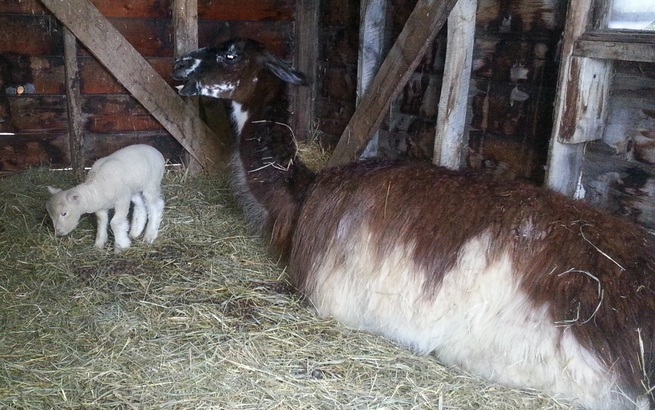 Everyone said I should get the baby lamb out of the shelter shared with llamas because they are big and will hurt him, but no way. The llamas are very gentle and careful with the new born. They bend down and say hello to him and even watch him when mom is outside eating. Lucy Llama babysits for mamma sheep when the lamb is left inside with her. He is comfortable around her and respectful too. The sheep and the llamas share the same feeder and although llamas are territorial when it comes to their food, they certainly tolerate little Dominique lamb under their feet and carefully step around him. He does tend to stick to the corners near mom and then curls up in a soft bed of hay for a nap when he is tired. Dominique is a pure bred Dorset sheep, a breed that was the most popular a century ago. Ewes weigh 150 pounds and up and rams 200 and up. Dominique had a slow start to life, being weak and clueless, but he is quickly making up for lost time and learning his way around the pen and shelter. The two mother llamas, Lucy and Karin are left in the pen because Jeanette Llama, Karin's cria was sold last week and Aiden, the little male cria from Lucy, has gone to live with the alpaca boys. Pretty soon, when Dominique is bigger, he and his mom will go to live with the ewes on the Fat Ewe Farm. Welcome little boy! 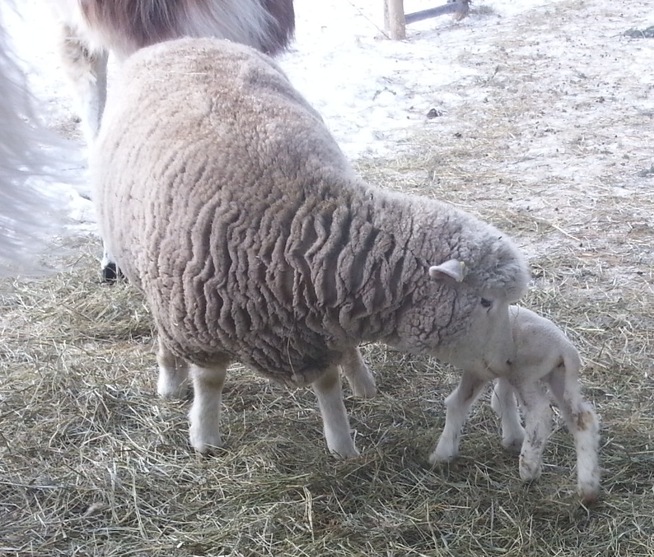 The new lamb is a male, Dominique and his tail and boy parts are whole. He is nearing a week old and if the tail docking and castration are going to take place, they should be done tomorrow. The new lamb is a male, Dominique and his tail and boy parts are whole. He is nearing a week old and if the tail docking and castration are going to take place, they should be done tomorrow. It is customary to dock the tails of long tailed sheep. Some more primitive sheep, like the Finnsheep, Icelandics and Romanovs, have short tails. These tails evolved over time and it is interesting to note that the breeds are old unimproved breeds from cold climates generally. Other breeds have long wooly tails and it has become standard practice to dock the tails very short. The rationale behind this is that the animal stays cleaner without feces or urine clinging to the tail wool and breeding for ewes is easier without a long wooly tail to get in the way. But, tails are there for a reason and yes, fly strike is awful and can be deadly, but tails can be swished to keep the animals more comfortable around biting insects and the tails protect the delicate tissues from sunburn and animal bites. When showing Jacob sheep, a very old unimproved breed, the tails are allowed to be left on and whole and no points are taken off for natural tails. Most other breeds, especially commercial breeds, suffer the cruelty of removing almost the entire tails. Usually the tail is banded with a tiny elastic band shortly after birth, certainly within the first week of life, and often at the same time as the testicles are banded. The little lambs cry and dance. I am sure any male would if a very tight band that cut the blood flow to his most private parts was installed. Ouch!!!! The tail bands are nearly as uncomfortable. There are long tailed, fat tailed and short rat tailed sheep at The Fat Ewe Farm. Some have docked tails and only a few are castrated via the elastic bands. Most ram lambs are left in tact and kept in a ram pen. Their fate is usually for meat anyhow and they grow faster with everything in tact. There is no reason to put them through the terrible pain and discomfort of castration. As far as the tails go, at this point, some are docked, but the leaning is to leaving the tails on as well. There have been on issues for breeding except with Dora, the very fat tailed Karakul sheep. Either she is infertile or her tail presents too much of a problem to non Karakul rams. So far, there has not been a case of fly strike. The first year, I actually hosed down and clipped the tail area on several sheep that feces encrusted wool. Now shearing later seems to make a difference and shearing the tail also helps. The long tails let the sheep swat at bugs and keep the exposed parts out of the sun and not exposed, if you get that picture. What do you think about tail docking? yes or no? 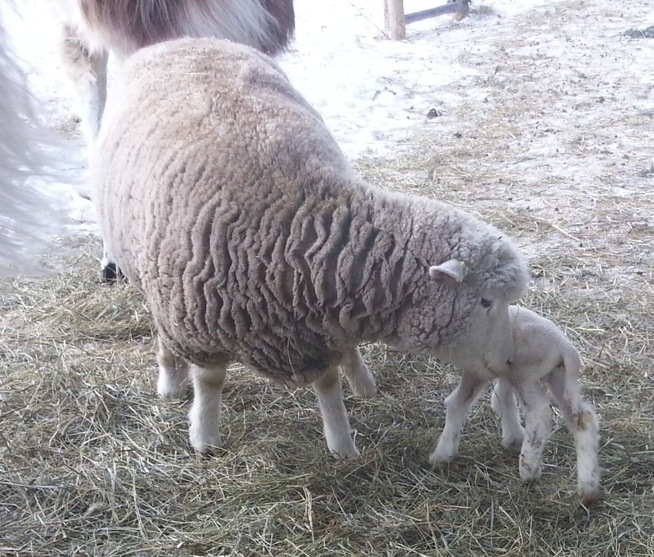 Junior is outside with his mother today. You can see his rear left leg is being held up off the ground. He manages on three limbs, though he stumbles and falls, but can get up again on his own. Junior is outside with his mother today. You can see his rear left leg is being held up off the ground. He manages on three limbs, though he stumbles and falls, but can get up again on his own. The little ram lamb born three days ago is stronger. He is able to follow his mother outside and find his way back to the barn. Going up the single short step is a challenge, because he is not using one of his hind legs. He holds it off the ground and does not put weight on it. Upon examination, I find nothing unusual. The bones are still soft at this stage and he could have a break in a hip or leg bone from being stepped on. The llamas are extremely gentle and careful around him, but his mother, in her zealousness to get away from me will run right over him. Darn I do not like wild sheep. But what is the correct avenue to follow regarding the sheep. He is male and the only Dorset to be born on the farm. His mother is healthy, but the unrelated ram lamb that came with her has coccidiosis, an amoeba like parasite that can cause diarrhea and weight loss if severe enough. His is not severe. I sent a stool sample to the vet where they do a look under the microscope to identify known parasites. There is a medication for the ram waiting at the vet's but the lamb is not suffering in any way. In the meantime, I am exploring herbal remedies for the problem. The little ram lamb could also have coccidiosis, because he has runny poop, but the first baby milk poop is like that. In a few days I will see if he becomes more normal. In the meantime, the little lamb is not robust and spry, but gaining. He has a bad leg or hip though. Do I give him the chance knowing that he requires extra attention and care already or do I give him away to some one who will bottle feed him, fatten him up and eat him? Or do I give him the extra care and do so myself? Hmmm, to ponder this question and find an answer.... 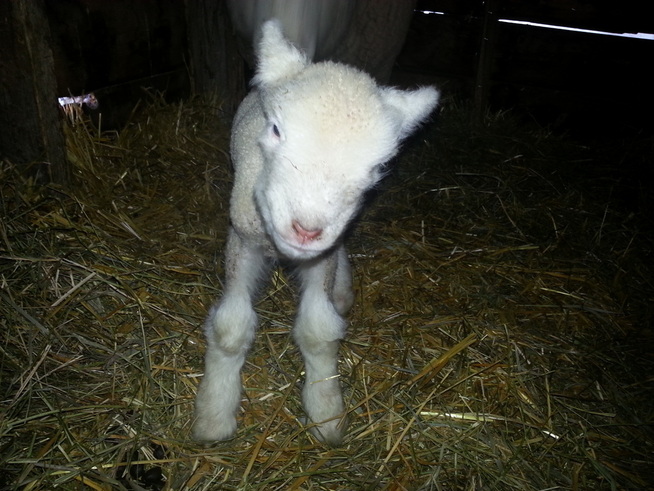 The little lamb that was just born is not doing well. He was weak and skinny, much much more so than he should have been. Today, he is not using his left hing leg at all, not putting any weight on it. It appears normal, but the bones are soft, so it is hard to tell. My guess is that either his mother or another of her mates stepped on the little guy. This evening, while I was playing cards with my friend, I heard the bleating of a sheep. I suspected it was the mother calling her boy and went out to investigate. Sure enough, she was frantic, going from one end of the pen and the barn to the other. The lamb was nowhere in sight. Robbie, the border collie, found him outside the fence under a spruce tree, huddled in the snow and ice, shivering. He was unharmed, but how he got himself out there, I have no idea. I am just grateful to have found him safe and alive. I took him back inside and presented him to mamma. He did not try to nurse, so he could not have been lost for too long, I think. Instead, he laid down on the straw and curled up, with mamma ever watchful over him. I sure hope he makes it and that whatever his problem is with his leg, it rights itself soon, so he can run and jump and play like a little lamby should . 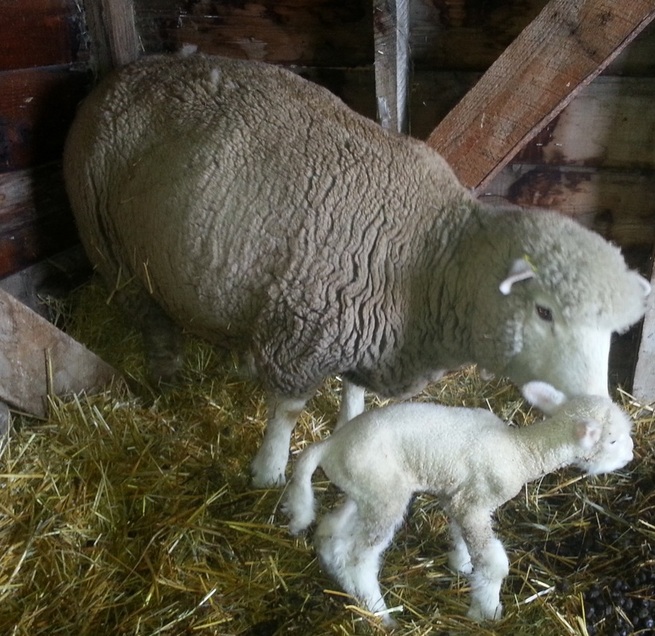 The Dorset ewe came bred and was supposedly due at the end of December. It appeared that she was, with all the signs in place and one day, she bled a bit too, but no lambs were forthcoming. This morning she had a lovely little boy, though he is weak and very thin. She was big enough to have had triplets or even quads. The little lamb barely weighs five pounds and is weak. He can stand and walk, but he falls easily and has difficulty righting himself and getting back up. It appears that he was nursing, but the ewe is as wild as they come and would not let me anywhere near to her, even when I was holding her lamb. Usually, the ewe is so protective the first day, that she will come to her lamb, no matter who or what is present. Not so with this ewe...she was having none of it. I would have caught her and put her on her side and held the baby to nurse if I could have. Anyhow, he has arrived. His skin on the poll of his right side is torn, likely by an overzealous mother licking and biting at him to get the amniotic sac and fluids off. She did do an excellent job of cleaning him. I put some fresh straw down and the llamas all came to visit and inspect the new born. I was a little leery of the male cria, but he also just inspected and snorted and left. Mother sheep will keep the baby inside and tend to him for a day or two, until he is strong enough to follow her out of the barn. Although the Dorset sheep were introduced to the farm to breed for meaty lambs, these two, the ram and the ewe, are way too wild to stay. They are for sale, but not until weaning and the newborn ram will stay. Somewhere down the road perhaps, tame Dorpers can be found and a little ewe from a new flock can come to live at the farm. Congratulations mamma Dorper! It's a boy! |
Categories
All
AuthorFluffy writes daily about the experiences on the farm and with the bed and breakfast patrons. Archives
October 2020
|

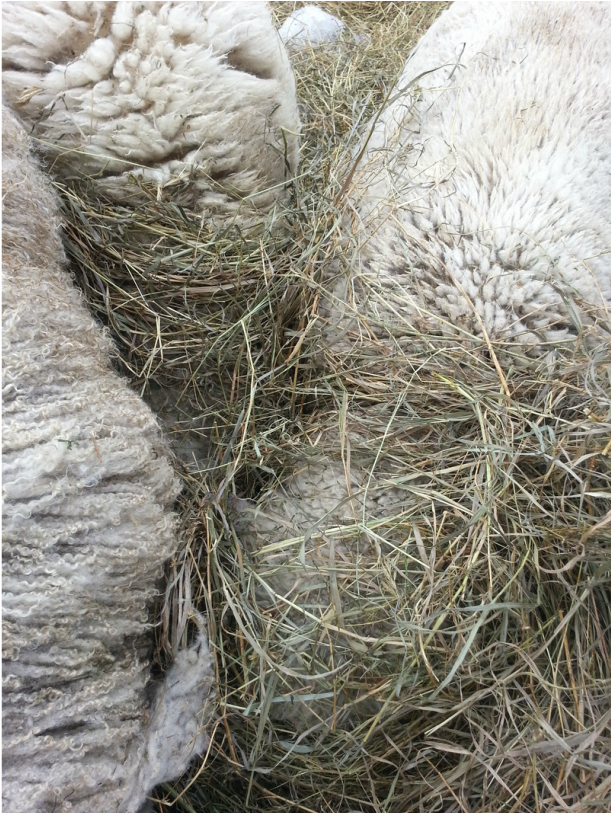
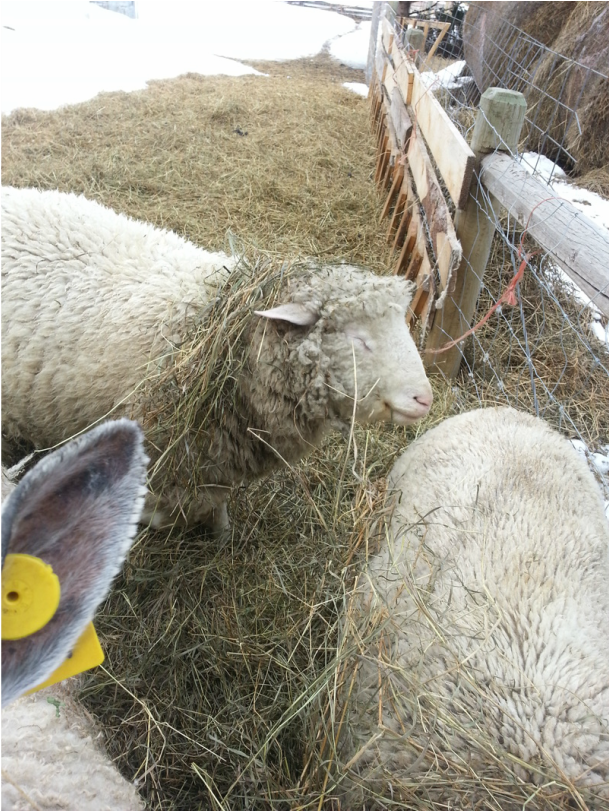
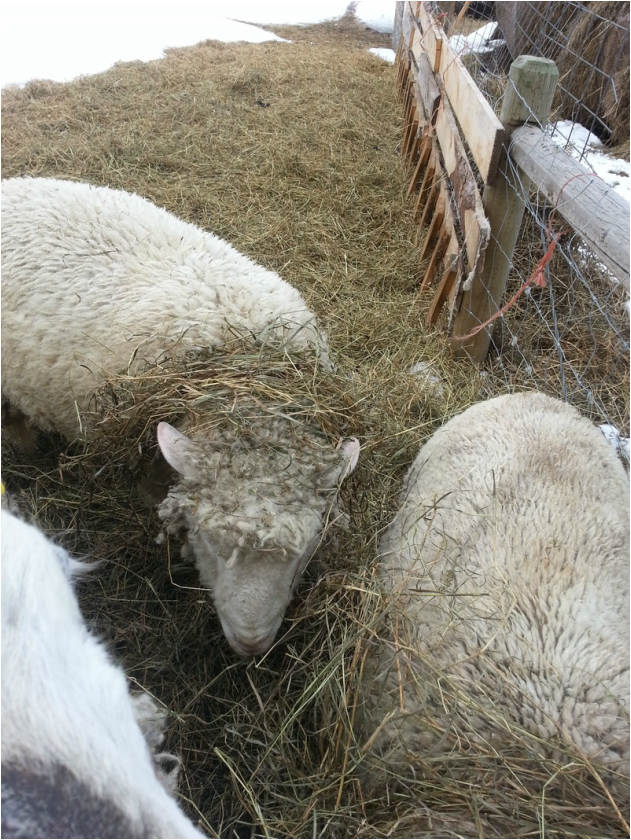
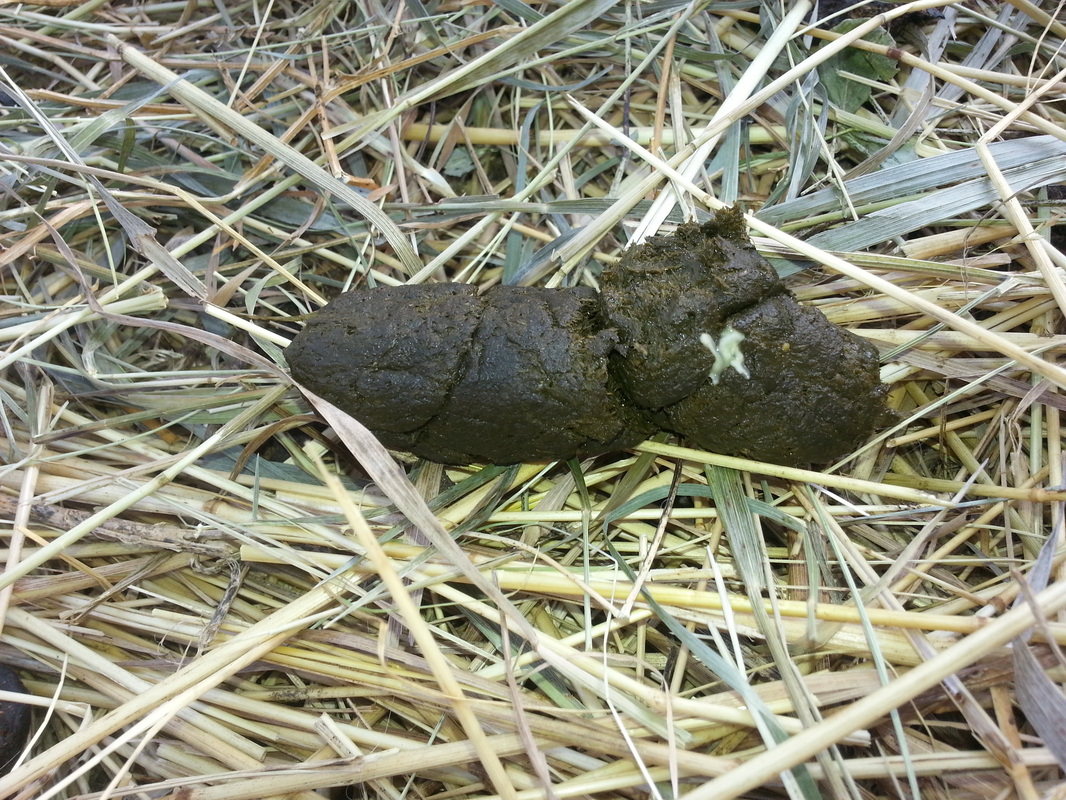
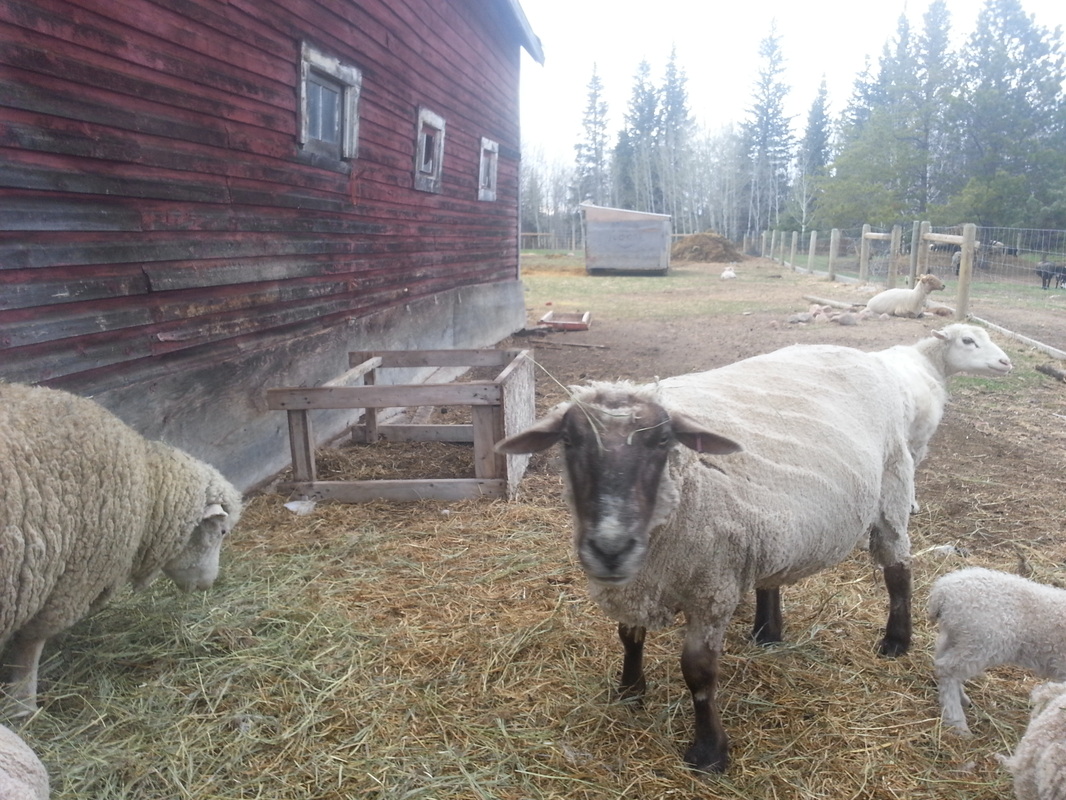
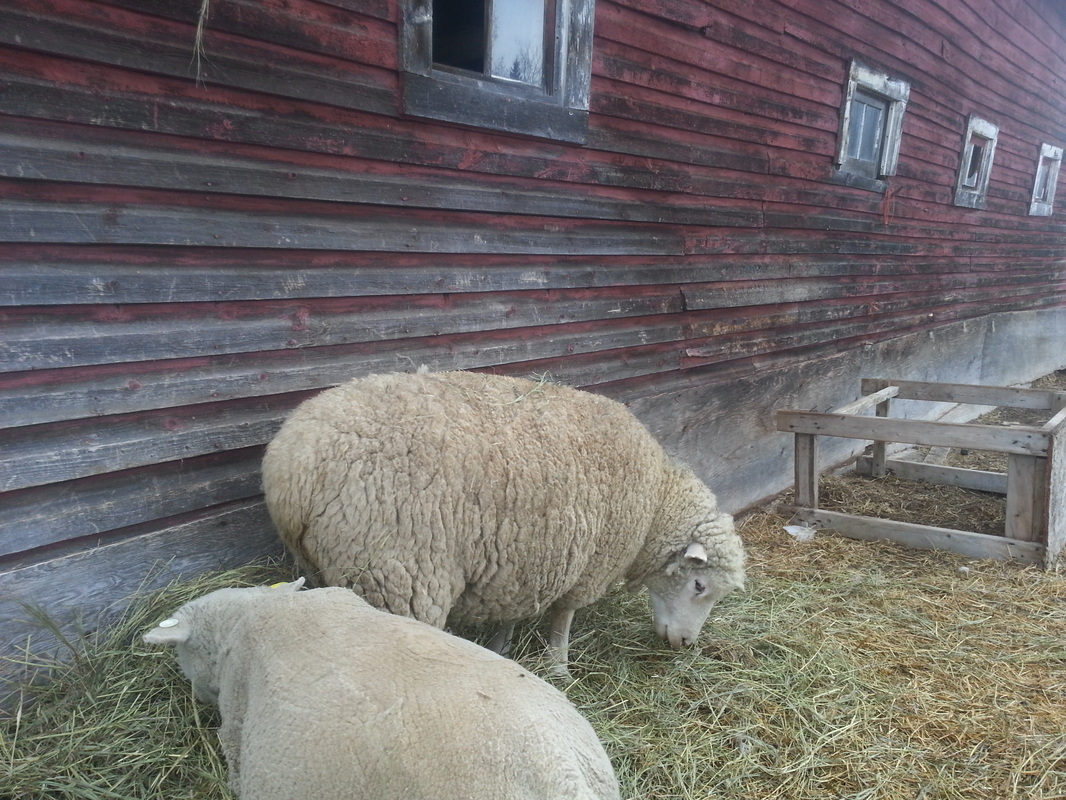
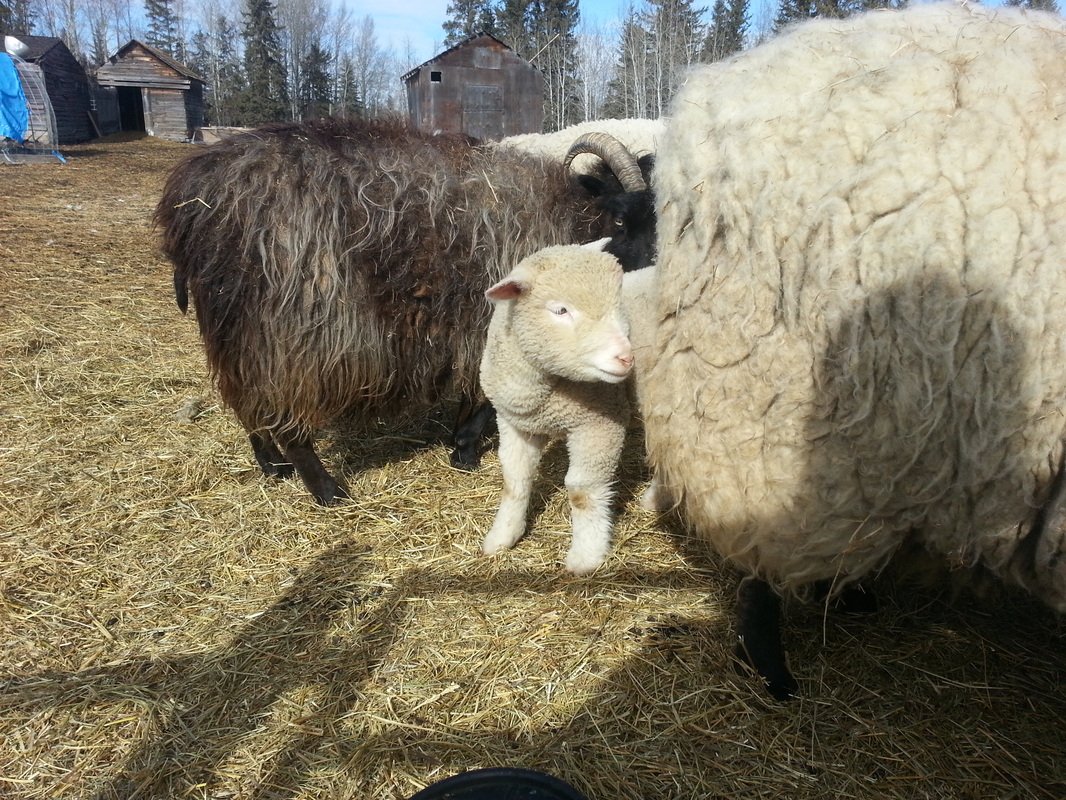

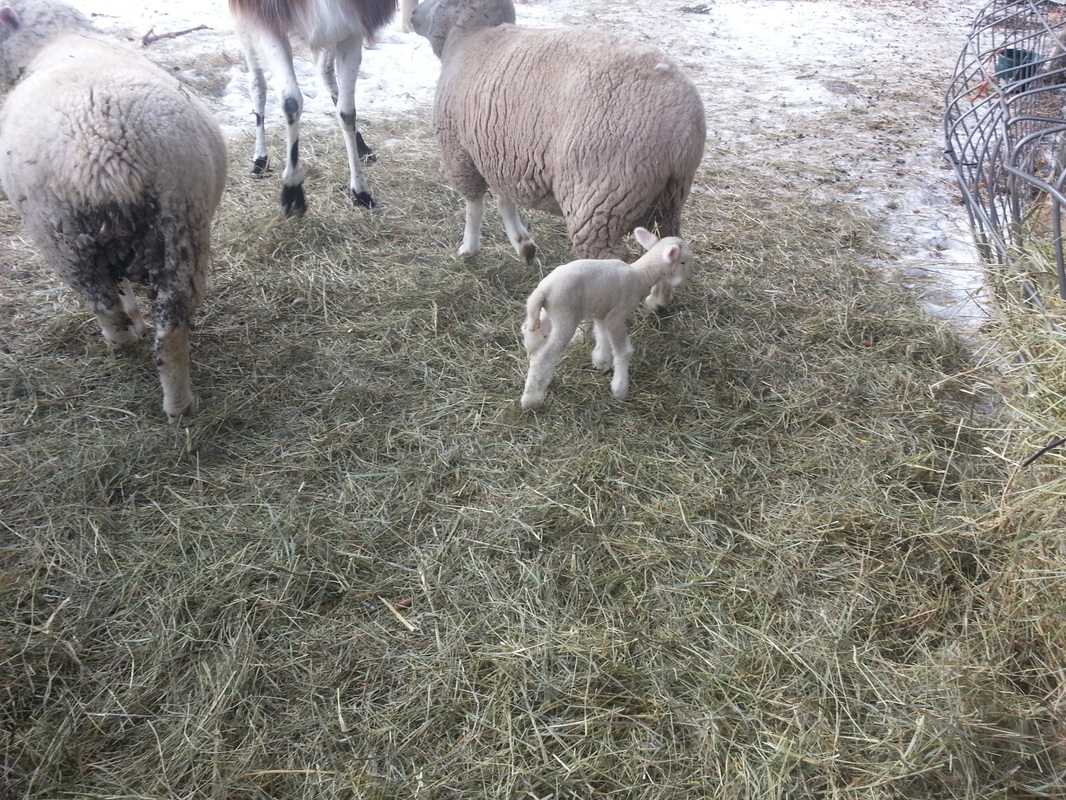
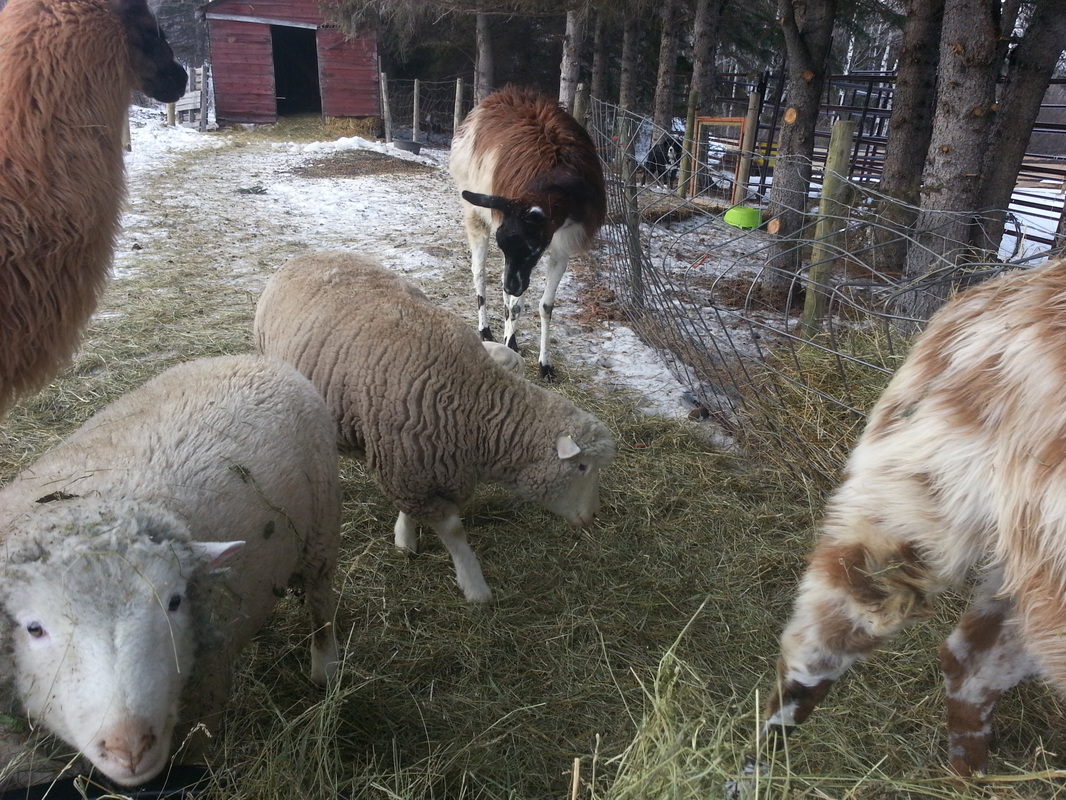
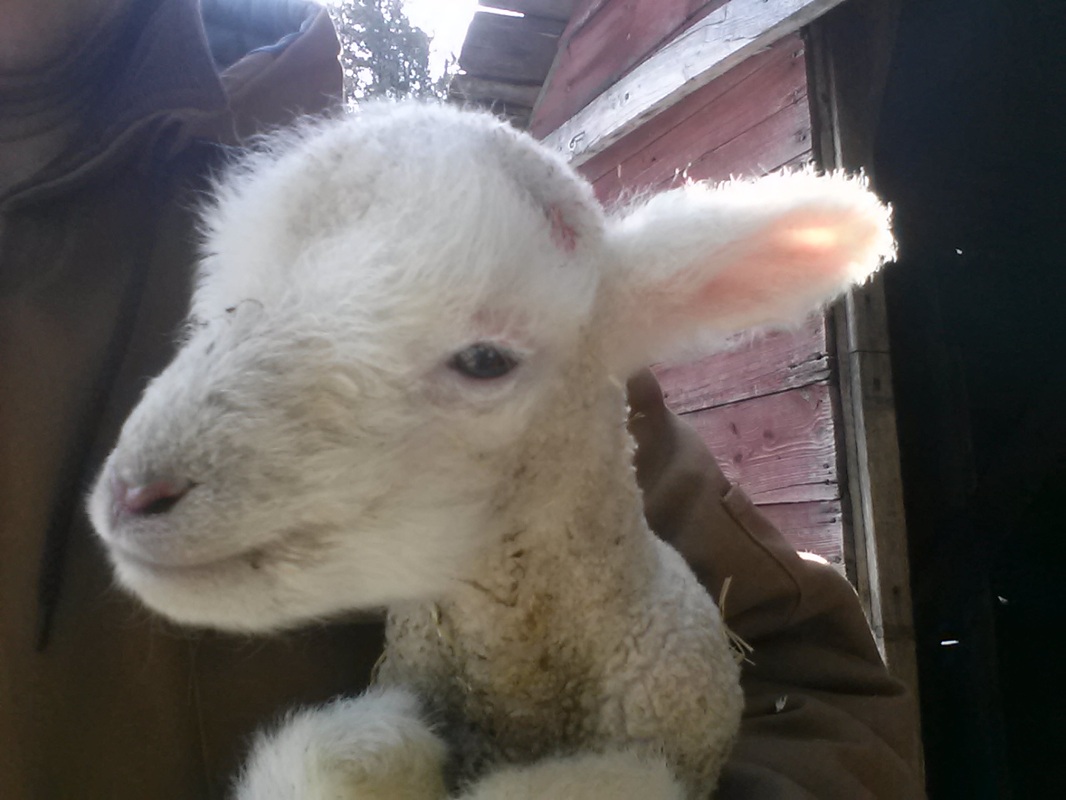
 RSS Feed
RSS Feed